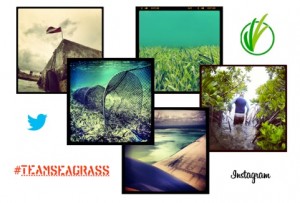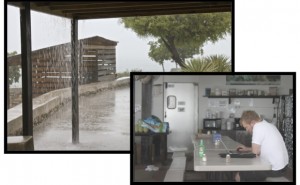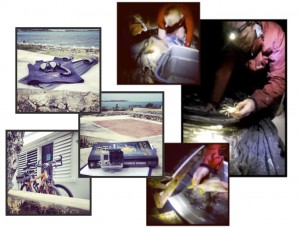Every so often (but only as often as we receive contributions) we feature a seagrass meadow from around the world. This week, Richard (RJ) Lilley reports from South Caicos is the Turks and Caicos Islands. He is a PhD student at the interdisciplinary Sustainable Places Research Institute at Cardiff University. He is exploring seagrass links to food security. He is also part of the Seagrass Ecosystems Research Group which are engaged in basic and applied research into the structure, function and resilience of seagrass meadows within a linked social ecological system and the food security support these meadows provide.
—————————————————
Photos & Text by Richard Lilley.
Hello #teamseagrass,
So here we are based on South Caicos, part of the Turks and Caicos Islands archipelago, working in collaboration with Department of the Environment and Maritime Affairs and the staff at the School of Field Studies. This seagrass research forms part of an interdisciplinary research project between Cardiff University’s Sustainable Places Research Institute and Swansea University’s Department of Biosciences, exploring the ecosystem service value of seagrass meadows in the the region, and helping to propose potential future management strategies to ensure the conservation of this essential fish habitat.
The Turks and Caicos Islands are a British Overseas Territory and lie southeast of the the Bahamas island chain. Whilst being geographically contiguous with the Bahamas they are separate political entities. Here in the Turks and Caicos Islands there is generally a dry and sunny marine tropical climate and but current temperatures here in June are high, averaging around 30℃ and we’ve been receiving some pretty high winds and heavy rainfalls interrupting our survey work somewhat!
Our survey work is multi-method. We’ve laid some Fyke-nets which we check every 12hrs at 06:00 and 18:00 and we’ve been Beach Seining at night from 20:00. Daytime visual censuses have also been undertaken.
Sites were chosen that represented “Lagoon” meadows and “Reef” meadows. Meadows were surveyed using a variety of techniques (visual census, fyke netting and seine netting) to triangulate data and establish robust representations of species assemblages. Species type, size and number were recorded and the data gathered elicited some important relationships between seagrass meadows and species habitat use. This was supported by data accessed and reviewed from local fisheries. Specifically key fisheries (e.g. Grouper, Conch, Grunt) in the Turks and Caicos Islands contributing to major export products and local food supply are supported by seagrass meadows.
We plan to remain here for the whole of June and so weather permitting we should be able to generate quite a decent data-set. Luckily we also have access to Wi-Fi, and so if anyone is keen to follow our progress check out #teamseagrass on instagram for daily photo updates from life in the field.
For more information on the project see here – http://www.cardiff.ac.uk/research/sustainableplaces/news/step-forward-for-seagrasses.html
For more information on the joint collaboration see here – http://www.seagrass.org.uk
For more information on the Sustainable Places Research Institute see here – http://www.cardiff.ac.uk/research/sustainableplaces/
For more information on Swansea University Biosciences see here – http://www.swansea.ac.uk/biosci/
For more information on the School for Field Stuides see here – http://www.fieldstudies.org/tci
For more information on the Department of the Environment and Maritime Affairs see here – http://www.environment.tc


